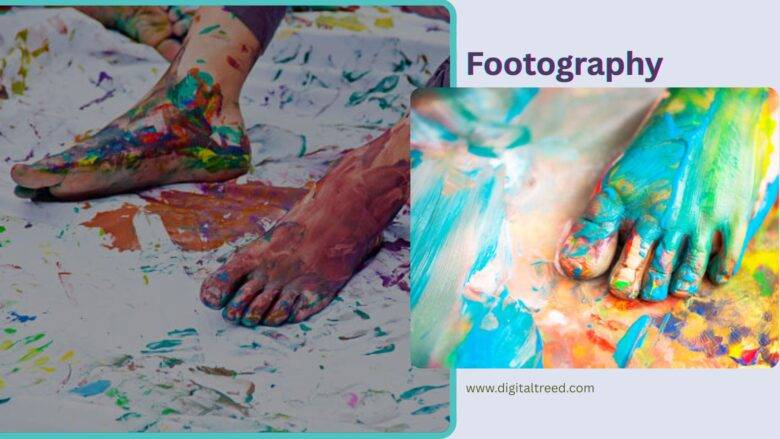Foot photography, or “footography,” has quietly grown into a serious art form. What started as simple pictures of feet has now turned into a booming niche, blending fashion, portraiture, and creative storytelling. Social media has fueled this rise, with photographers finding unique ways to showcase feet—from beachside elegance to high-end fashion campaigns.
Alright, let’s be real—why is everyone suddenly talking about foot photography? Well, because there’s actual demand for it. Sounds weird at first, I know, but think about it—brands, influencers, and even private collectors need high-quality foot images for stuff like ads, wellness campaigns, and personal projects. And guess what? They’re willing to pay. Photographers who know what they’re doing can actually turn this into a solid income stream. It’s not some random internet trend—it’s just another niche in the photography world that most people never really thought about before.
What Exactly Is Footography? More Than Just Foot Pics
At first, it might sound weird—like, why would someone specifically take photos of feet? But think of it as a specialized version of portrait photography, except the focus is entirely on feet. And trust me, it’s not just snapping random pictures.
Good foot photographers aren’t just randomly snapping pictures of feet—they actually know how to use lighting, angles, and composition to make them look good. It’s kind of like portrait photography, but instead of focusing on faces, it’s all about the feet. Whether it’s for a high-fashion campaign, a beauty brand showing off nail polish, or just someone creating artistic shots, the goal is simple: make feet look visually appealing. Sounds odd? Maybe. But just like hands in jewelry ads, feet have their own place in photography—and when done right, the results can actually be pretty impressive.
Also, foot photography is kind of pushing beauty standards in its own way. Just like body photography evolved over time, footography is finding its own space. Some people don’t get it, but those who do? They’re making it work for them.
How Social Media is Blowing Up Foot Photography
Social media has turned foot photography into an actual thing. Instagram, Pinterest, and TikTok have given photographers a way to showcase their work and connect with people who need it.
Some actual facts:
- The hashtag #FootPhotography has over a million posts on Instagram.
- There are dedicated marketplaces like FeetFinder, where people sell foot portraits—and some of the top sellers reportedly make over $10,000 a month (which is crazy, right?).
- Even luxury brands are hiring foot models to show off shoes, jewelry, and skincare products.
Read Also: The Ultimate Guide To Selling Feet Pics Online
Can You Actually Make Money Taking Pictures of Feet?
Short answer? Yeah, people are making real money from it. Long answer? It’s not just about snapping photos—you need skills, strategy, and a little business sense. Being a great photographer alone won’t cut it. You’ve got to know how to market yourself, find the right clients, and price your work properly. Some people treat it as a fun side hustle, while others have turned it into a legit full-time income. It all comes down to how serious you are and how well you put yourself out there.
Here’s where people actually pay for foot photography:
- Fashion & Beauty – Brands need polished foot shots for things like shoe ads, nail polish promotions, and accessory campaigns. Ever seen a sandal ad? Someone got paid to take that picture.
- Stock Photo Market – Websites like Shutterstock and Adobe Stock are always looking for different kinds of foot images. From bare feet on the beach to polished toes in heels, companies need a variety of visuals.
- Wellness & Healthcare – Yoga studios, podiatrists, spa businesses, and even foot care brands use foot imagery in their marketing. Think about those relaxing spa posters with perfectly pedicured feet—that’s a job for a foot photographer.
- So, can you make a living? If you have the skills, the patience to build a portfolio, and the hustle to put yourself out there, then yeah, it’s definitely possible.
- Custom Requests – Some people are willing to pay for personalized foot portraits (yes, really).
If you’re just starting out, you might make $50-$100 per session. But if you get good and start working with brands, you could easily charge $500+ per shoot.
What Do You Need to Get Started?
The Best Part? You Don’t Need a Fortune to Get Started
You don’t have to break the bank on expensive gear to take great foot photos. A solid setup isn’t about having the most high-end equipment—it’s about knowing how to use what you’ve got. Here’s what actually matters:
- A Decent Camera – If you’ve got a DSLR or mirrorless camera, awesome. Something like a Canon EOS 90D or Sony A7 III will get you crisp, high-quality shots. But honestly? If you’re just starting out, even a good smartphone with a solid camera and a macro lens attachment can do the job.
- Macro Lens – This one’s a game-changer. It lets you capture the fine details—like nail art, jewelry, or skin texture—without losing sharpness. If you want pro-level images, investing in a macro lens is 100% worth it.
- Lighting Setup – Natural light is great, but it’s not always reliable. A ring light or softbox will help you get soft, even lighting without harsh shadows, making the feet look smooth and polished.
- Tripod – You might think you don’t need one, but trust me, you do. A tripod keeps your shots steady, which is especially important for close-ups. No one wants blurry photos.
- Editing Software – Even the best shots need a little touch-up. Lightroom and Photoshop help adjust lighting, fix minor imperfections, and make your images pop.
You don’t need to go all-in on expensive gear right away. Start with what you have, learn how to use it well, and upgrade when you’re ready. At the end of the day, skill matters more than the equipment.
If you’re on a budget, even a high-end smartphone with a macro lens attachment can do the job when starting out.
Read Also: How to control your camera and capture the images
Ethics Matter: Things to Keep in Mind
Foot Photography: Keep It Professional & Profitable
Thinking of getting into foot photography? Cool. But before you dive in, here’s what you need to know.
Keep It Professional
- Get Consent – Always have a written agreement with models. Saves you from future headaches.
- Protect Your Work – Watermark your photos so no one steals and profits off them.
- Respect Models – Treat this niche like any other. Keep it professional and make sure everyone’s comfortable.
How to Actually Make Money
- Social Media is Key – Use Instagram, Pinterest, and TikTok. Post consistently, share behind-the-scenes.
- Build a Portfolio Site – A clean, pro-looking website makes you legit and attracts clients.
- Know Your Market – Not everyone values foot photography, but some do—and they pay well. Find your audience.
Keep it pro, market smart, and this can turn into a real business.
Network with Brands – Reach out to shoe brands, skincare companies, and modeling agencies. They always need high-quality foot imagery. Sell on Online Marketplaces – Websites like FeetFinder or stock photo platforms can be a solid way to make passive income. SEO is Key – Use the right keywords in your website and social media posts. If people are searching for foot photography services, you want them to find you. So… Is Foot Photography Actually Worth It? Look, if you love photography, have an eye for detail, and don’t mind putting in some effort to market yourself, this can be a legit
It’s not some get-rich-quick scheme, but plenty of photographers are making good money in this niche. At the end of the day, it’s a mix of creativity and business. If that sounds like something you’d enjoy, why not give it a shot? Worst case, you end up with some cool photos. Best case? You turn it into a profitable gig. And hey, if nothing else, at least now you know why foot photography is such a big deal.




Leave a Review